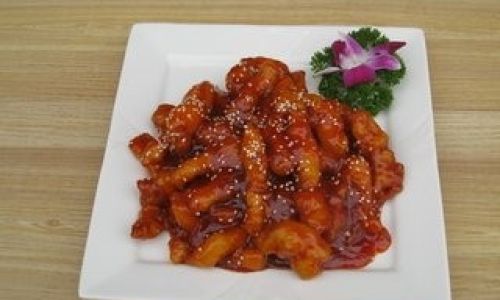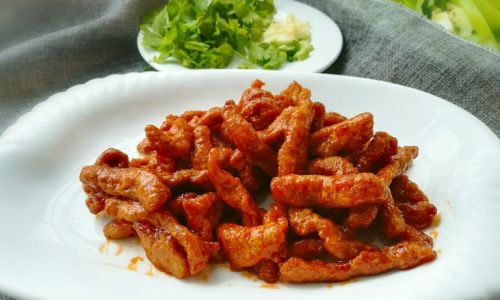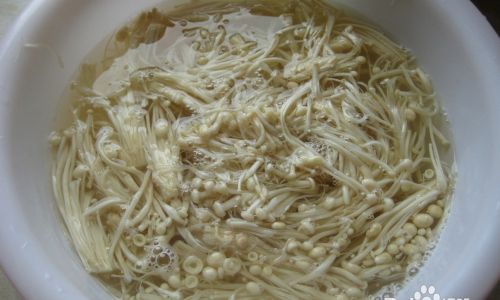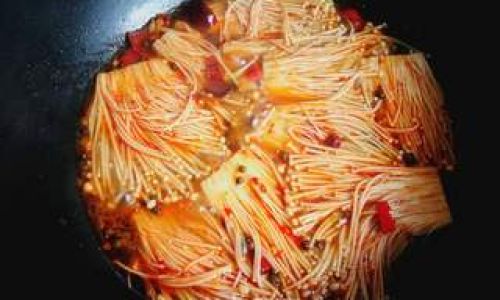Introduction
Sweet and Sour Pork Tenderloin, a dish that combines the tangy sweetness of a well-balanced sauce with the tender, juicy texture of pork tenderloin, is a beloved culinary delight enjoyed by many around the world. Whether you’re a seasoned chef or an enthusiastic home cook, mastering this dish can elevate your culinary repertoire and delight your taste buds. This comprehensive guide will walk you through the process of making Sweet and Sour Pork Tenderloin from scratch, ensuring that every bite is as delightful as the last.
Understanding the Ingredients
Before diving into the cooking process, it’s crucial to understand the ingredients that make Sweet and Sour Pork Tenderloin so special. Here’s a breakdown of the essentials:
- Pork Tenderloin: This lean, tender cut of meat is ideal for frying and retains moisture well, making it perfect for this dish.
- Cornstarch: Used for coating the pork, cornstarch helps create a crispy exterior while keeping the meat juicy inside.
- Eggs: Adding an egg to the cornstarch mixture helps the coating adhere better to the meat.
- Vegetable Oil: For frying, choose a neutral-flavored oil with a high smoking point like canola or peanut oil.
- For the Sauce:
- Ketchup: Provides the base sweetness and rich tomato flavor.
- White Vinegar or Rice Vinegar: Adds the tangy element to balance the sweetness.
- Sugar or Honey: Adjusts the sweetness level to your preference.
- Soy Sauce: Adds a savory depth and a hint of umami.
- Garlic and Ginger: Essential for flavoring the sauce and enhancing its aroma.
- Pineapple Juice or Apple Cider Vinegar (optional): Adds a touch of fruitiness and complexity.
- Bell Peppers and Onions: These vegetables add color, crunch, and additional sweetness to the dish.
- Salt and Pepper: For seasoning the pork before frying.
Preparation and Cooking Techniques

Now that you’re familiar with the ingredients, let’s dive into the preparation and cooking techniques:
Step 1: Preparing the Pork Tenderloin
-
Trim and Slice: Begin by trimming any excess fat or silver skin from the pork tenderloin. Slice the tenderloin into thin strips, approximately 1/4-inch thick. This ensures even cooking and a pleasant bite-sized experience.
-
Seasoning: Place the pork strips in a bowl and season them generously with salt and pepper. This step adds essential flavor to the meat.
Step 2: Creating the Batter
-
Mixing Dry Ingredients: In a separate bowl, combine cornstarch, a pinch of salt, and pepper. The cornstarch will form the crispy coating, while the salt and pepper provide seasoning.

-
Adding Wet Ingredients: Create a well in the center of the dry ingredients and add one beaten egg. Gradually mix the wet and dry ingredients until a smooth, thick batter forms. The consistency should be thick enough to coat the pork strips evenly but not too thick that it becomes gluggy.
Step 3: Coating the Pork
-
Dip and Coat: One by one, dip each pork strip into the batter, ensuring it’s fully coated. Shake off any excess batter to avoid a heavy coating, which can lead to greasy results.
-
Resting: Place the coated pork strips on a plate lined with parchment paper. Allow them to rest for about 10-15 minutes. This resting period helps the batter set and adhere better to the meat.
Step 4: Frying the Pork
-
Heating the Oil: Pour enough vegetable oil into a deep frying pan or a deep fryer to cover the pork strips completely. Heat the oil to 350°F (175°C). Use a thermometer to ensure accurate temperature control.

-
Frying: Carefully place a few pork strips in the hot oil, avoiding overcrowding. Fry for about 3-4 minutes, or until golden brown and crispy. Use a slotted spoon to remove the pork from the oil and place it on a plate lined with paper towels to drain excess oil.
-
Maintaining Temperature: Between batches, ensure the oil temperature remains constant. Adjust the heat as necessary to maintain the optimal frying temperature.
Step 5: Preparing the Sweet and Sour Sauce
-
Sautéing Aromatics: In a large skillet or saucepan, heat a small amount of vegetable oil over medium heat. Add finely chopped garlic and ginger, and sauté until fragrant, about 30 seconds to 1 minute.
-
Combining Ingredients: Add ketchup, vinegar, sugar (or honey), soy sauce, and pineapple juice (if using) to the skillet. Stir well to combine and bring the mixture to a simmer.
-
Thickening: Allow the sauce to simmer for about 5-7 minutes, stirring occasionally. If the sauce is too thin, you can mix a small amount of cornstarch with water to create a slurry and add it to the sauce, stirring constantly until it reaches your desired consistency.

-
Taste and Adjust: Taste the sauce and adjust the sweetness, tanginess, and seasoning as needed.
Step 6: Adding Vegetables and Pork
-
Cooking Vegetables: Add sliced bell peppers and onions to the sauce. Cook for about 3-4 minutes, or until they are tender-crisp.
-
Combining Pork and Sauce: Add the fried pork strips to the skillet with the vegetables and sauce. Toss gently to coat the pork evenly with the sauce. Cook for an additional 1-2 minutes, allowing the flavors to meld together.
Step 7: Serving
-
Plating: Serve the Sweet and Sour Pork Tenderloin hot, garnished with chopped green onions, sesame seeds, or a wedge of lime for an extra burst of freshness.

-
Accompaniments: Pair it with steamed rice, fried rice, or noodles for a complete meal.
Conclusion
Making Sweet and Sour Pork Tenderloin at home may seem like a daunting task, but with the right ingredients, proper preparation, and attention to detail, you can achieve restaurant-quality results. This dish is not only delicious but also versatile, allowing for personalization based on your taste preferences. Whether you enjoy it as a main course or a sharing plate, Sweet and Sour Pork Tenderloin is sure to become a staple in your culinary repertoire. Happy cooking!





0 comments